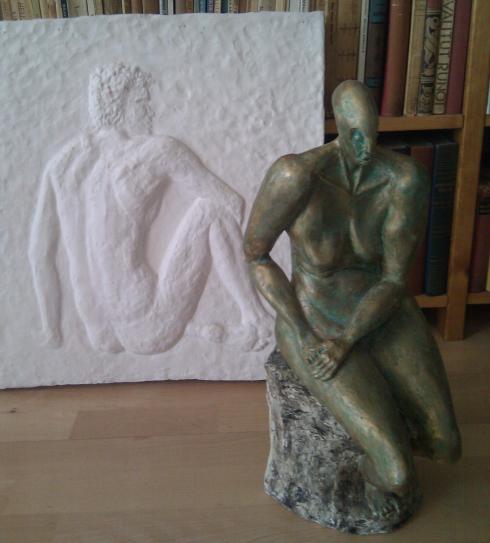In a recent blog post Harold Jarche – a great knowledge source for smart work and learning – described his view on how real value creation happens at the edge of organizations and requires different management and communications practices.
Here below Harold’s wonderful visualization of how and where value is being created: the chaotic edge, complex and complicated, and the automated parts of the business ecosystem. He states:
“I think the edge will be where almost all high value work gets done in organizations. Core activities will be increasingly automated or outsourced. Most of the people in an organization will be on the edge. The core will be managed by very few internal staff.”

Emergent Value by Harold Jarche (see licensing at http://www.jarche.com)
The aspects he has included into his picture are very much like how I see the changing environment for the most businesses. However this wasn’t the case few years back. Ten years ago I did some research on the same topic, in an entirely different business environment.
Harold’s visualization reminded me of my 10-years old Analyzing Framework for Value Creation. It was a part of my Master’s thesis (anno 2001) in which I researched how organizations (at that time) tried to create value by enhancing their supply chain processes, and finding new ways for cooperation within their business network.
The leading discussion topic was process automation; it all was very transaction-oriented. And instead of the notion social, it was all about virtual. Yes, it was the golden time of ERP’s and Business Process Management.
My idea and approach was to study how value was created in our common business processes, and how those could be developed towards more collaborative and ‘virtual’ ones, and especially what aspects have an effect on the value-creation in these processes. Here below my framework from 2001.

Analyzing Framework for Value Creation from my thesis "Value Creation in Integrated and Collaborative Business Processes".
On the outer circle a blend of soft and hard elements: Culture, Commitment, Leadership, and Strategy. The middle circle represents the two main tasks associated with managing business processes: Coordination and Integration. On the inner circle I’ve chosen three set of pairs: Infrastructure & Architecture, Relations & Processes, and Information & Knowledge. All these further having an effect on the ultimate target in the middle – Value innovation and Creation.
Kind of Social Business 1.0, or Enterprise 1.0 or what do you say; some of the aspects are quite close to the today’s key topics social and social business?
All the elements are still valid but clearly my framework needs re-structuring and refreshing. When I now look at Harold Jarche’s model and my old framework, I see clearly three things:
- Firstly, business development people at that time were stuck at the process automation hype, in the name of cost and time savings. Both good targets, however people and innovation (other than process innovation) were neglected. The same applies to organizational learning. These were not in the core focus for most organizations.
- Secondly (ok, this is obvious); the speed by which the level complexity has grown is huge. Change and complexity are becoming a norm. As Harold Jarche says: “Any work where complexity is not the norm will be of diminishing value.” In my model, I see it all too simplified.
- Thirdly, I was on the right track but missing some adjectives – especially the social. And I was stuck to the processes too much; the physical process (distribution of goods) and the related information processes.
Summarized it can be said that from the people and innovation perspective, my model is indeed missing some width and depth.
When value creation and innovation is discussed, a notion of the ‘edges’ Harold referred to, is an interesting one. The idea of ‘edges’ was presented by two of my favorite thinkers John Hagel & John Seely Brown, and can be associated into this discussion. Here’s a snippet from HBR article few years back:
“Edges within firms represent early stage business initiatives with high growth potential, whether new market-oriented initiatives or new work practices, often generated by the born-digital generation entering the workforce. Edges at the individual level represent the weak ties in our social networks that quicken personal growth by connecting us with experiences and resources we might not have otherwise encountered.”
The book of the above-mentioned talent duo – Power of Pull – presents The Pull approach which enables organizations to learn faster and translate what we’ve learned into improved performance and customer value. Warmly recommended book, it gives many valuable ideas of how to succeed in the world where value is created in a very complex environment; on the edge, in the interactions, in the trust-based relationships. Within and outside the organization.
Yes, I’ll very much agree with Harold’s wise words:
“Social networks, collaboration and cooperation must be the norm when dealing with complex or chaotic situations.”
Changes in the organizational culture, more open attitudes and behavior, together with social media tools and services, are altering the landscape of human connectedness and the ways of value creation.
I’ll end this post by quoting The Beatles: With a Little Help from My Friends!
Welcome, Renaissance of Relationships!
PS. Check out the recent video by John Seely Brown: Collaborative Innovation and a Pull Economy
PS2. If somebody would like to refresh my old framework, feel free to do so : )



